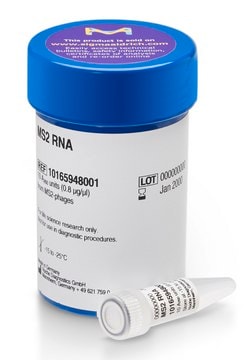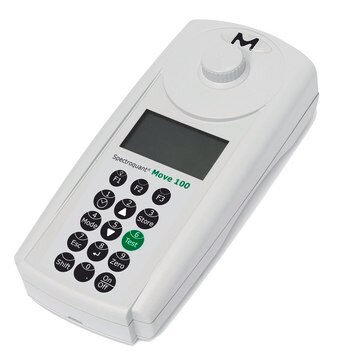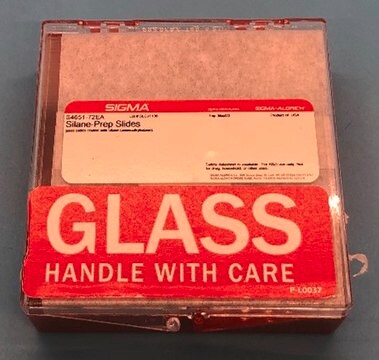Alle Fotos(1)
Wichtige Dokumente
D3654
Lambda Phage DNA, Non-methylated from Escherichia coli host strain GM119 (rm-,dam-,dcm-)
solution
Anmeldenzur Ansicht organisationsspezifischer und vertraglich vereinbarter Preise
Alle Fotos(1)
About This Item
Empfohlene Produkte
Qualität
Molecular Biology
for molecular biology
Form
solution
Mol-Gew.
31.5 × 103 kDa
48 kb
Eignung
suitable for substrate for restriction endonucleases
Versandbedingung
dry ice
Lagertemp.
−20°C
Suchen Sie nach ähnlichen Produkten? Aufrufen Leitfaden zum Produktvergleich
Spezifität
Unique Restriction Sites (Methylated DNA) are: Apa I,Nae I, Nar I, Nhe I, PaeR7 I, SnaB I, Xba I and Xho I.
Anwendung
Lambda Phage DNA, Non-methylated from Escherichia coli host strain GM119 is suitable for use as a substrate for restriction enzymes. It was used as substrate for Prevotella ruminicola DNase activity studies. It was also used as a GC content standard in genome sequencing of 16S rDNA sequences of Cellvibrio japonicas.
Lambda Phage DNA, Non-methylated from Escherichia coli host strain GM119 (rm-,dam-,dcm-) has been used:
- to calibrate spectrophotometer (LKB) and HPLC (high performance liquid chromatography) method for determination of bacterial genomic DNA G+C content
- to amplify the λ; exonuclease gene by polymerase chain reaction (PCR)
- in DNase activities
The lambda phage has an icosahedral head and a long tail terminating in a single fiber. At both ends of the 5′ termini are complementary 12-nucleotide single strand sequences that contribute to the cohesive ends (cos region) of the DNA. The tail of the phage latches on the host outer membrane receptor and injects phage DNA into the cell. The phage converts the E. coli to a lysogenic state in which the phage functions are repressed and the phage genome may remain dormant (prophage) for a long time. This property is seen in bacteriophages that carry CII and CIII genes that are responsible for CI expression. Bacteriophages with CI mutation in the CI gene are able to maintain a lysogenic state at defined temperatures.
Infecting E. coli strain GM 119 with lambda C1857 strain creates E. coli lysogen cultures. The phage is released from E. coli cell pellets by lysing with a high salt buffer, pH 8.0. The crude mixture is passed through a series of enzymatic steps, multiple cesium gradients, and phage DNA is dialyzed against 1 mM Tris-HCl, pH 8.0, and 1 mM magnesium chloride. The DNA is finally extracted by phenol-chloroform solution.
Infecting E. coli strain GM 119 with lambda C1857 strain creates E. coli lysogen cultures. The phage is released from E. coli cell pellets by lysing with a high salt buffer, pH 8.0. The crude mixture is passed through a series of enzymatic steps, multiple cesium gradients, and phage DNA is dialyzed against 1 mM Tris-HCl, pH 8.0, and 1 mM magnesium chloride. The DNA is finally extracted by phenol-chloroform solution.
Physikalische Form
Phage DNA is isolated from infected E. coli, passed through a series of enzymatic steps before final phenol-chloroform extraction. This non-methylated lambda DNA is completely digested by Bcl I, Cla I, Mbo I, Mbo II, Taq I or Xba I whereas methylated lambda DNA(product number D3779) is only partially cleaved. The unique restriction sites are Apa I,Nae I, Nar I, Nhe I, PaeR7 I, SnaB I, Xba I and Xho I.
Substrate
Non-methylated lambda DNA is completely digested by Bcl I, Cla I, Mbo I, Mbo II, Taq I or Xba I whereas methylated lambda DNA is only partially cleaved.
Ähnliches Produkt
Lagerklassenschlüssel
10 - Combustible liquids
WGK
WGK 2
Flammpunkt (°F)
Not applicable
Flammpunkt (°C)
Not applicable
Persönliche Schutzausrüstung
Eyeshields, Gloves, type ABEK (EN14387) respirator filter
Hier finden Sie alle aktuellen Versionen:
Besitzen Sie dieses Produkt bereits?
In der Dokumentenbibliothek finden Sie die Dokumentation zu den Produkten, die Sie kürzlich erworben haben.
Kunden haben sich ebenfalls angesehen
Janine G Borgaro et al.
Nucleic acids research, 41(7), 4198-4206 (2013-03-14)
In T4 bacteriophage, 5-hydroxymethylcytosine (5hmC) is incorporated into DNA during replication. In response, bacteria may have developed modification-dependent type IV restriction enzymes to defend the cell from T4-like infection. PvuRts1I was the first identified restriction enzyme to exhibit specificity toward
Distribution of restriction endonucleases among some entomopathogenic strains of Bacillus sphaericus
Zahner V and Priest FG
Letters in Applied Microbiology, 24, 483-487 (1997)
Reclassification of `Pseudomonas fluorescens subsp. cellulosa?NCIMB 10462 (Ueda et al. 1952) as Cellvibrio japonicus sp. nov. and revival of Cellvibrio vulgaris sp. nov., nom. rev. and Cellvibrio fulvus sp. nov., nom. rev.
Humphry D R, et al.
International Journal of Systematic and Evolutionary Microbiology, 53(2), 393-400 (2003)
Allosteric ring assembly and chemo-mechanical melting by the interaction between 5?-phosphate and lambda exonuclease
Yoo J and Lee G
Nucleic Acids Research, 43(22), 10861-10869 (2015)
David R Humphry et al.
International journal of systematic and evolutionary microbiology, 53(Pt 2), 393-400 (2003-04-25)
'Pseudomonas fluorescens subsp. cellulosa' NCIMB 10462 has been demonstrated by a polyphasic taxonomic approach to be a member of the genus Cellvibrio. 16S rDNA sequence analysis suggests that this is the only genus that could accept this specimen. The sequence
Unser Team von Wissenschaftlern verfügt über Erfahrung in allen Forschungsbereichen einschließlich Life Science, Materialwissenschaften, chemischer Synthese, Chromatographie, Analytik und vielen mehr..
Setzen Sie sich mit dem technischen Dienst in Verbindung.









